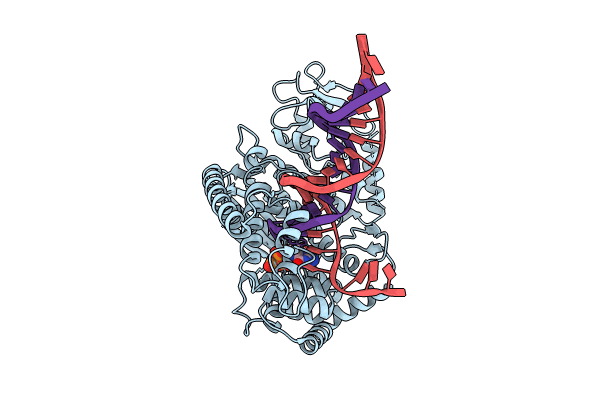
Deposition Date
2024-06-18
Release Date
2024-11-06
Last Version Date
2025-06-04
Entry Detail
PDB ID:
9CAY
Keywords:
Title:
Ternary structure of Plasmodium falciparum apicoplast DNA polymerase (exo-minus)
Biological Source:
Source Organism:
Homo sapiens (Taxon ID: 9606)
Plasmodium falciparum (isolate 3D7) (Taxon ID: 36329)
Plasmodium falciparum (isolate 3D7) (Taxon ID: 36329)
Method Details:
Experimental Method:
Resolution:
3.17 Å
Aggregation State:
PARTICLE
Reconstruction Method:
SINGLE PARTICLE


